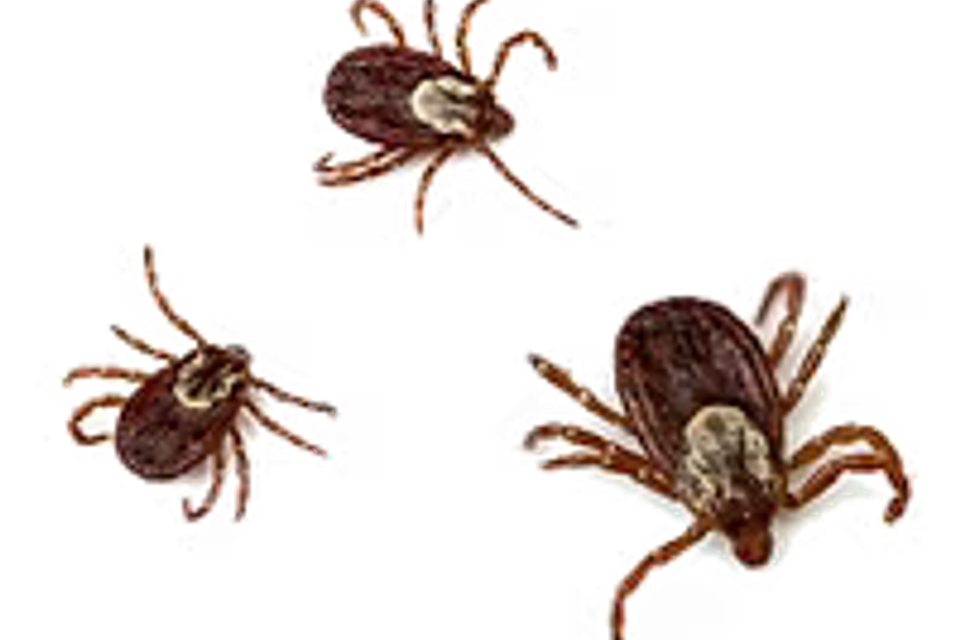
Ticks
Some ticks are venomous and may cause paralysis. Other ticks are vectors of disease. A “Vector” is an animal that is capable of transmitting a “Pathogen” from one organism to another. A “Pathogen” is an organism which causes a disease in the animal receiving it. The following pathogens and the diseases they cause are transmitted by vectors of the disease.
Viruses
The disease is called Filariasis, which is also called Elephantiasis when the worms block the lymphatic system. This is also called Heartworm Onchocerciasis, when the worm lodges in the heart.
Rickettsiae is called Rocky Mountain Spotted Fever, also produced from Rihettsiae are Louse Borne Typhus, Rickettsiaepox, Scrub Typhus and Trench Fever. This list is informative and not inclusive of the numbers of diseases carried by ticks. For instance, the rabbit tick serves as a vector for Rocky Mountain Spotted Fever and Tularemia. It is rabbits, from which the human disease can then become infective. Ticks & Mites are important vectors of disease because they are capable of transmitting many organisms. There are two important factors which greatly contribute to the successful spread of a “Pathogen.”
Transstadial Transmission
If the pathogen can be passed through the stages of the vector’s development from larva to nymph to adult, this is called transstadial transmission.
Transovarial Transmission
This expresses the act of the pathogen that can enter the eggs of the vector and be passed on to the next generation, thus, it will have a better chance of being transmitted to a vertebrate host. Ticks & Mites have transstadial and transovarial transmission for the pathogenic organisms they carry. The importance of transovarial disease transmission is a vector like the tick is capable of transmitting the organism hereditably through its offspring. This means the disease is permanent in any locality it reaches until every vector offspring of infected offspring is exterminated. This would be quite a task since ticks produce thousands of eggs and the infection can be carried to several generations.
Household Ticks & Ticks in Vicinity of Home or Business
Some control can be achieved by keeping the outdoor area clean & mowed. Removal of tall weeds & grass is essential to eliminate resting areas for ticks that help prevent desiccation. However, chemical control will be required to eliminate ticks on the exterior. This work is produced to be informative and raise awareness among people who work in areas where they may come in contact with ticks or other vectors of disease.As always, if you have been bitten consult your physician.
Viruses
- Yellow Fever
- Encephalitis
- Colorado Tick Fever
- Relapsing Fever
- Plague
- Tularemia
- Shigella, which causes Salmonella, which is the cause of Typhoid Fever, Food Poisoning and Anthrax.
- Malaria
- Chagas Disease
- African Sleeping Sickness
- Piroplasmosis
- Anaplasmosis
The disease is called Filariasis, which is also called Elephantiasis when the worms block the lymphatic system. This is also called Heartworm Onchocerciasis, when the worm lodges in the heart.
Rickettsiae is called Rocky Mountain Spotted Fever, also produced from Rihettsiae are Louse Borne Typhus, Rickettsiaepox, Scrub Typhus and Trench Fever. This list is informative and not inclusive of the numbers of diseases carried by ticks. For instance, the rabbit tick serves as a vector for Rocky Mountain Spotted Fever and Tularemia. It is rabbits, from which the human disease can then become infective. Ticks & Mites are important vectors of disease because they are capable of transmitting many organisms. There are two important factors which greatly contribute to the successful spread of a “Pathogen.”
Transstadial Transmission
If the pathogen can be passed through the stages of the vector’s development from larva to nymph to adult, this is called transstadial transmission.
Transovarial Transmission
This expresses the act of the pathogen that can enter the eggs of the vector and be passed on to the next generation, thus, it will have a better chance of being transmitted to a vertebrate host. Ticks & Mites have transstadial and transovarial transmission for the pathogenic organisms they carry. The importance of transovarial disease transmission is a vector like the tick is capable of transmitting the organism hereditably through its offspring. This means the disease is permanent in any locality it reaches until every vector offspring of infected offspring is exterminated. This would be quite a task since ticks produce thousands of eggs and the infection can be carried to several generations.
Household Ticks & Ticks in Vicinity of Home or Business
- American Brown Dog Tick
- Relapsing Fever Tick
- Groundhog Tick
- Fowl Tick
- Pigeon Tick
- Rocky Mountain Wood Tick
- Black Legged Tick
Some control can be achieved by keeping the outdoor area clean & mowed. Removal of tall weeds & grass is essential to eliminate resting areas for ticks that help prevent desiccation. However, chemical control will be required to eliminate ticks on the exterior. This work is produced to be informative and raise awareness among people who work in areas where they may come in contact with ticks or other vectors of disease.As always, if you have been bitten consult your physician.
